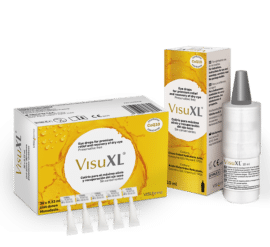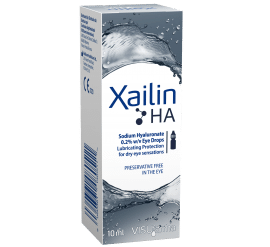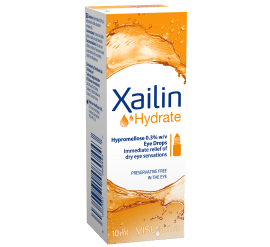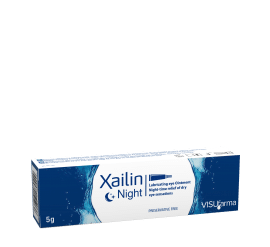Dry eye syndrome
Dry eye syndrome is an abnormality of the tear film. Patients with dry eye experience eye discomfort and/or visual symptoms and it may lead to eye surface disorders. Dry eye syndrome is fairly common in adults over age 40.
Symptoms
The most common symptoms are the sensation of sand (or other foreign body) in the eye, reddening, irritation, pain, burning and photophobia.
Aetiology
Dry eye syndromes cover all disorders of the tear film. Tears are the thin liquid film that is continuously renewed and that protects the exposed ocular surface of the eye. Tears are produced by the main and accessory lacrimal glands and are excreted through the tear duct into the oropharynx. The tear film is made up of three layers:
- An intermediary aqueous layer, the thickest, of which the most important function is to provide atmospheric oxygen to the corneal epithelium;
- An external lipid layer, which has the function of delaying evaporation of the aqueous layer, and lubricating the eyelids as they run over the eyeball;
- A deep mucous layer, which has the ability to transform the corneal epithelium from hydrophobic to hydrophilic.
Tear secretion includes basal and reflex secretion. The innervation of the main lacrimal gland is parasympathetic in nature; the peripheral afferents are mediated by the ophthalmic branch of the trigeminal nerve.
The main functions of the tear film are metabolic, lubricant and dioptric. For a well-being sensation, the lacrimal system must be in perfect condition: any change will cause varying degrees of ocular discomfort. The tear film can be altered by intrinsic or extrinsic (environmental) factors. These factors impact in various ways on the stability of the tear film, causing ocular discomfort which leads to symptoms such as burning, the sensation of a foreign body and lacrimation. This is a ‘vicious’ cycle of inflammation.
Main causes
The main causes of dry eye syndrome include:
- Age (notably menopause);
- Reduction in the aqueous component of the tear film, most commonly caused by inflammations such as Sjögren’s syndrome or rheumatoid arthritis;
- Reduction in the production of the mucous layer of the tear film, due to changes in the conjunctiva as a result of autoimmune disease such as Stevens–Johnson syndrome, or in the cases of burns or trachoma, which are more frequent in developing countries;
- Drugs;
- Overuse and misuse of contact lenses;
- Changes in the surface of the cornea, caused by scarring or dystrophy.
Some drugs such as beta-blockers, antihistamines and antidepressants or diseases such as diabetes, can reduce lacrimation.
Investigations
A physical eye examination will detect changes in the conjunctiva and the tear film. In addition, tests can be performed:
- The Schirmer’s test (performed by placing small strips of absorbent paper on the eyelid margin) permits a quantitative assessment of tears produced within a certain period of time.
- The break-up time (BUT) test (analysis of tear film breaks stained with fluorescein) permits a qualitative assessment of the superficial lipid layer.
Treatment
The treatment of this condition is based on lubricant eye drops. In addition, it is fundamental to treat any underlying conditions (eye-related or not), to review systemic drug treatments which may cause eye dryness, and to make any necessary lifestyle changes, particularly related to diet and smoking.
Finally, it is useful to advise patients on how to reduce eye strain, such as blinking frequently, changing focus from near vision to distance vision, taking regular short breaks, checking ambient light, eliminating sources of reflected glare and regulating humidity and ventilation.
Reference
Report of the International Dry Eye Workshop (DEWS) 2007. The Ocular Surface 2007;5(2)











